Through the lens of history, we rightfully respect the Germans for their engineering prowess during World War II.
However, the Nazis were not beyond copying other nations kit when it suited them.
In 1942, U.S. forces received their rude awakening to modern combat in Tunisia.
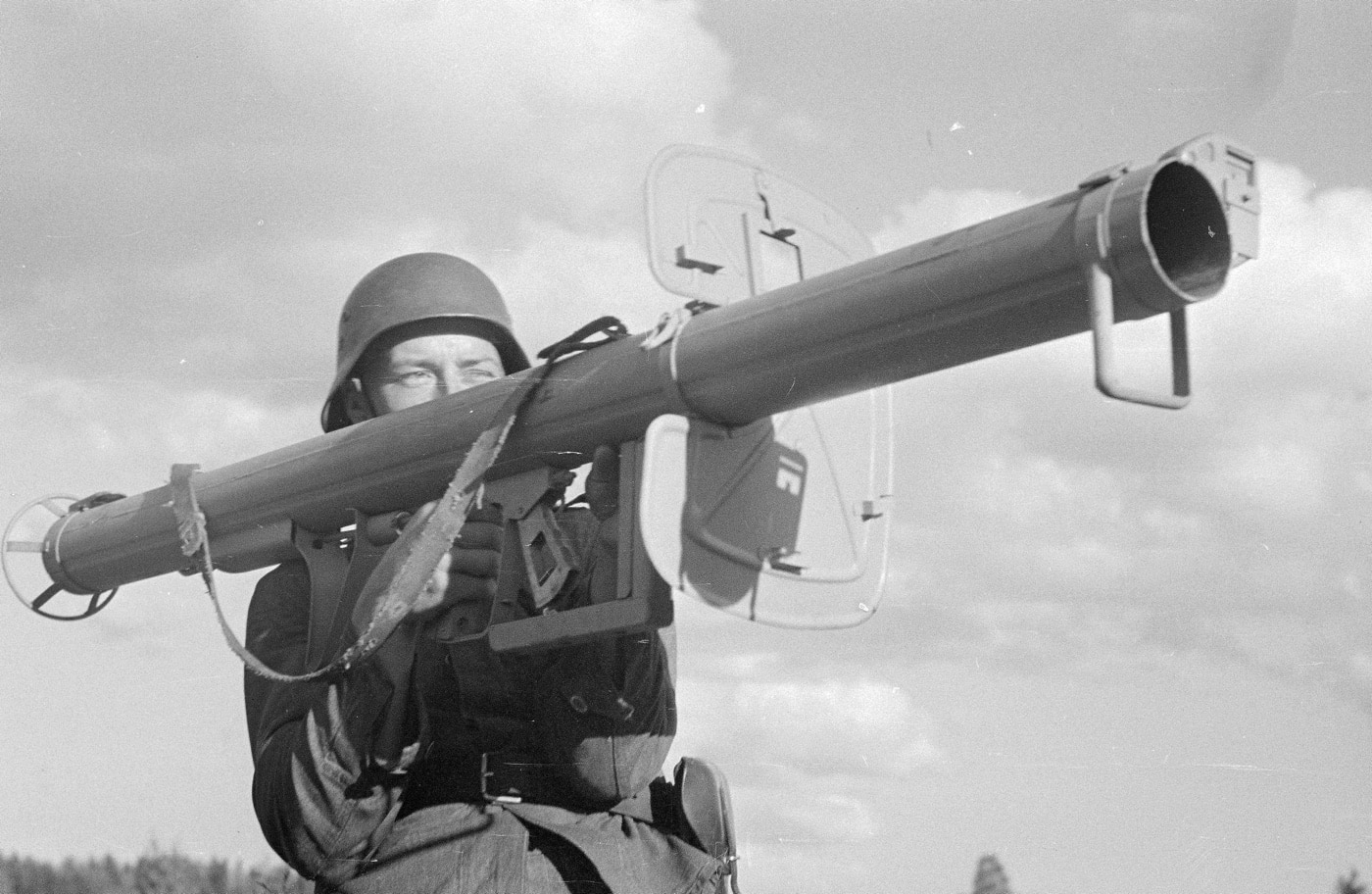
The Panzerschreck was a fearsome ant-tank weapon inspired by the American bazooka. This July 1944 photo shows a later model with a blast shield.Image: SA-kuva
During the interwar years, the U.S. military was allowed to atrophy badly.
However, with the benefit of hindsight, Adolf Hitler was not necessarily in his right mind.
Once the U.S. was dragged bodily into the war, we had a steep learning curve.
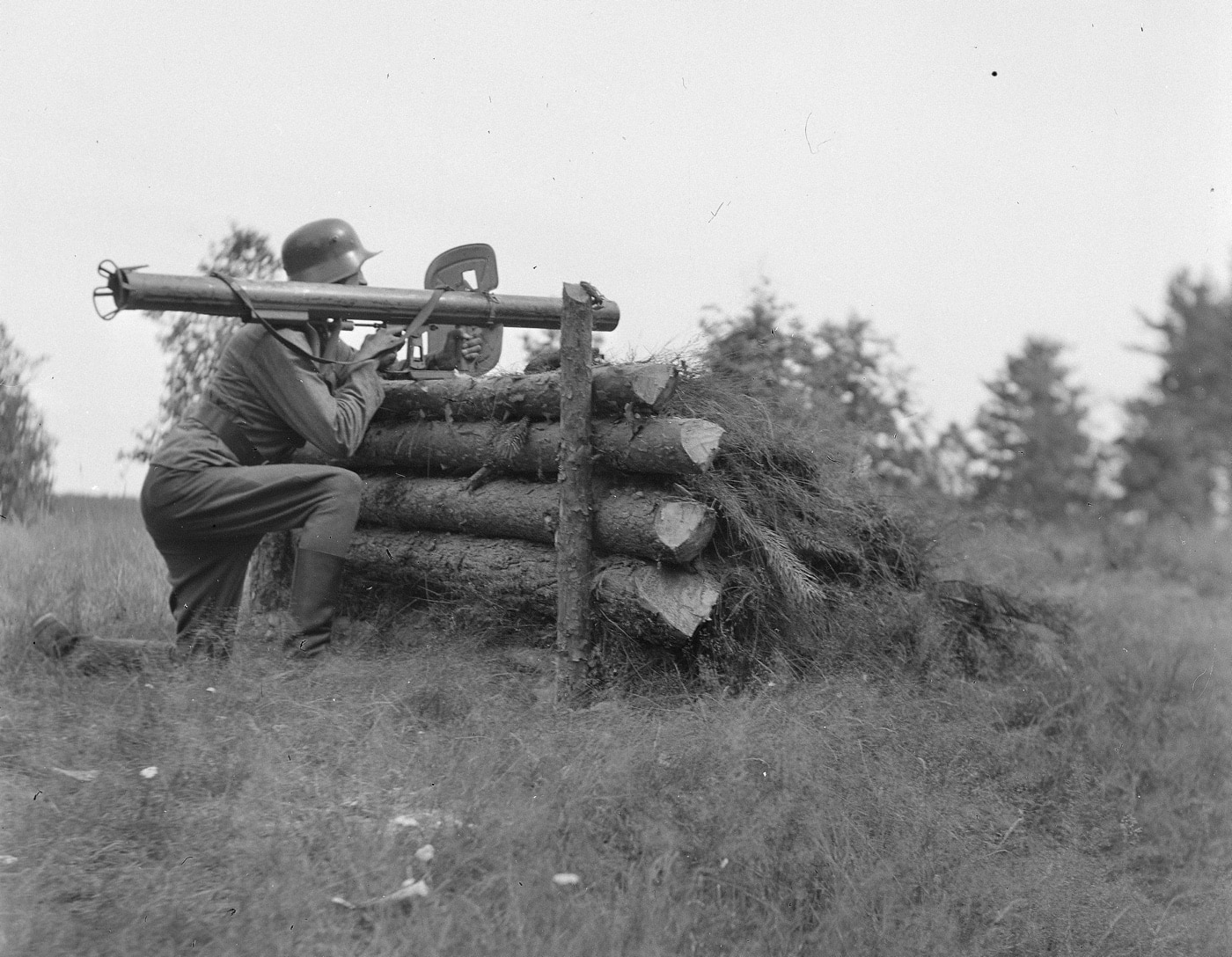
A Finnish soldier trains with a German-made 88 mm Panzerschreck in late 1944.Image: SA-kuva
This bloody schoolyard was destined to be North Africa.
Our opponents were the battle-hardened formations of Erwin Rommels Afrika Korps.
Strategic objectives included Casablanca, Oran, and Algiers.
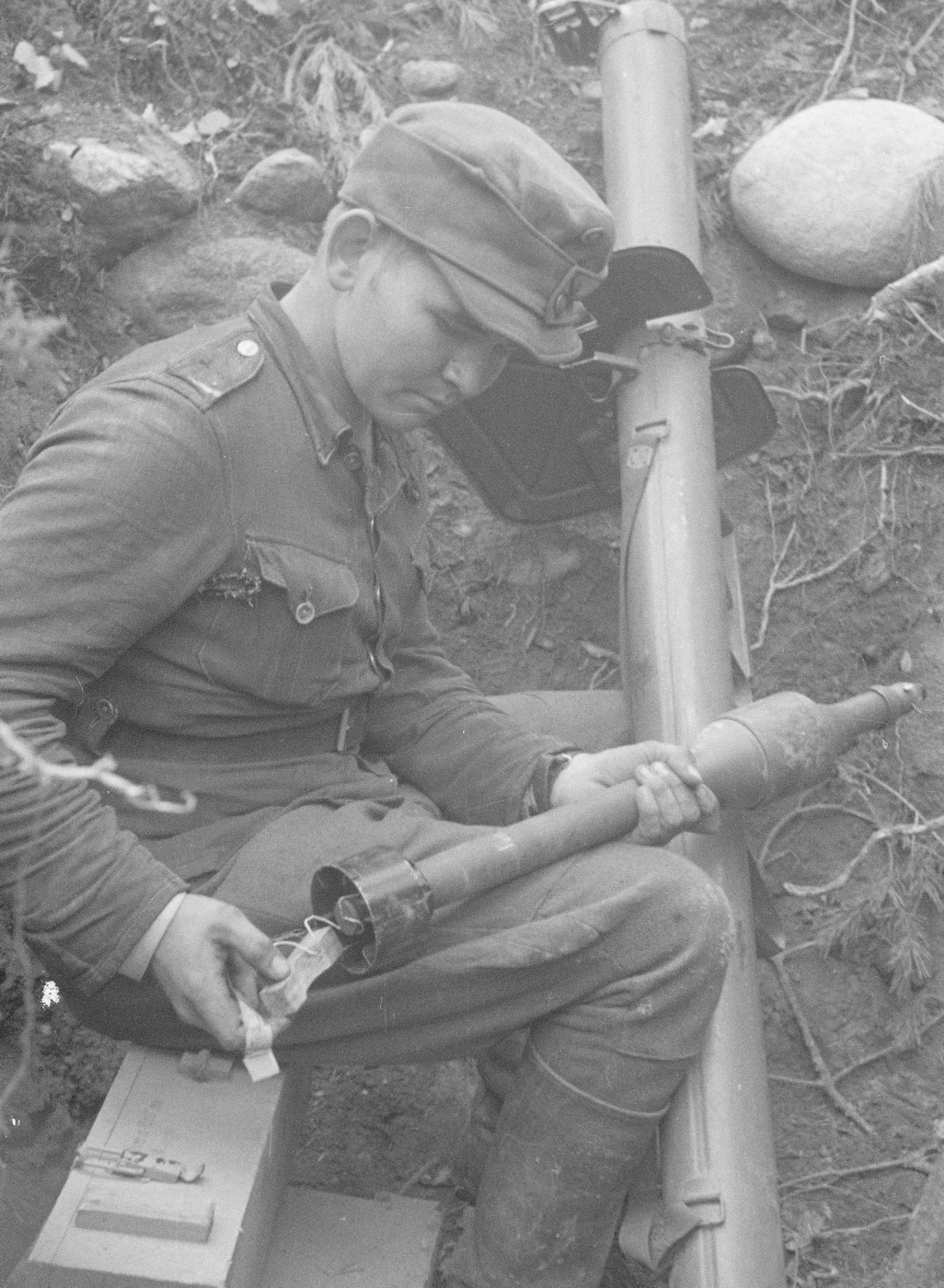
Finnish Cpl. Eino Makkonen prepares an 88mm projectile for use in a Panzerschreck on August 12, 1944.Image: SA-kuva
For this reason, some British forces actually wore American uniforms.
The Spitfires of the Fleet Air Arm were also painted with American roundels.
Regardless, once on the ground, things did not go smoothly.
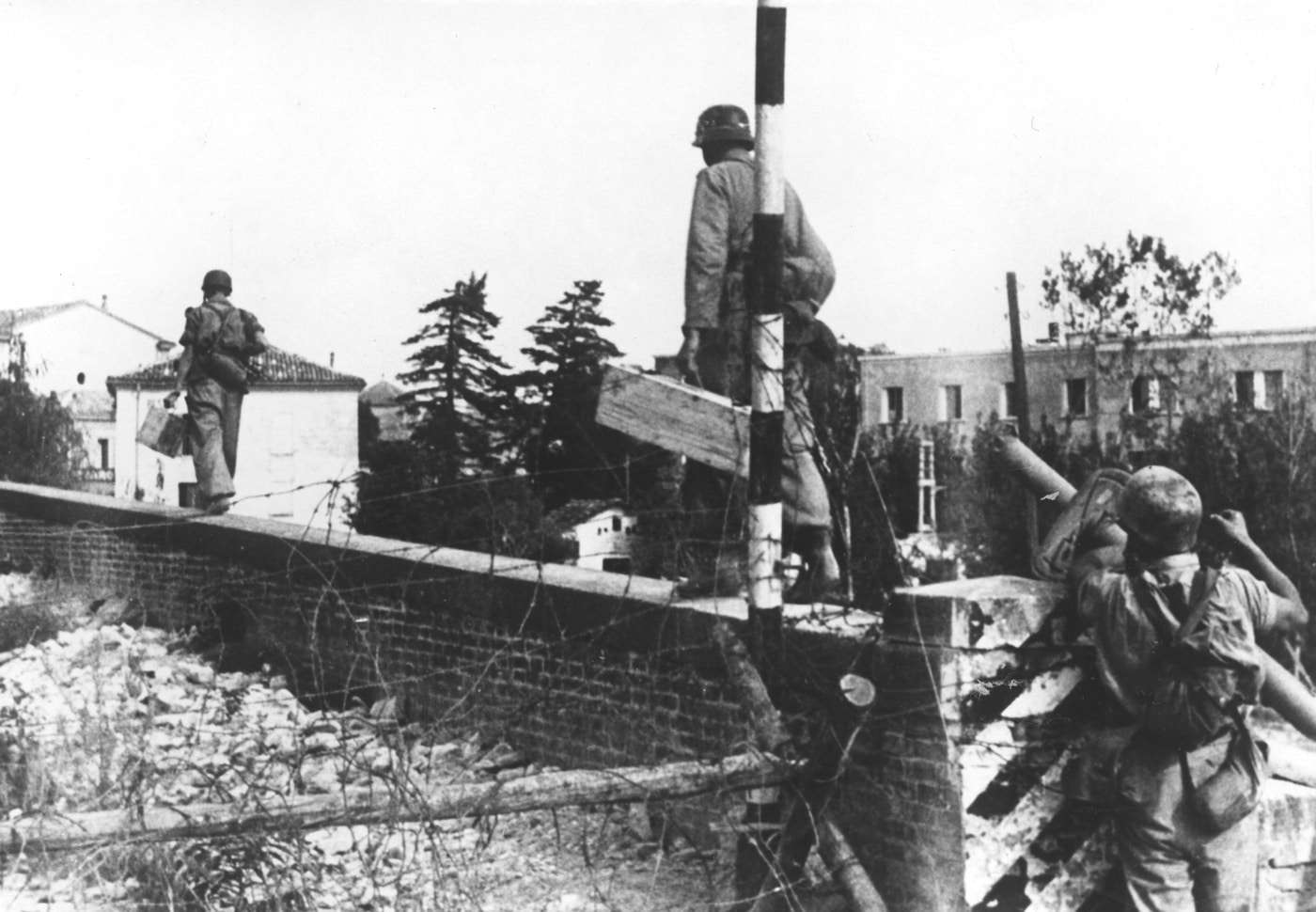
German paratroopers on the Italian front in September 1944. The soldier on the right carries the Panzerschreck RPzB 54 anti-tank grenade launcher. Image: Polish State Archives
The subsequent battle at Kasserine Pass was particularly horrible.
While the Allies ultimately won the day, Axis forces captured large amounts of American equipment along the way.
This was Germanys first taste of such stuff as the Sherman tank and thesemi-automatic M1 rifle.
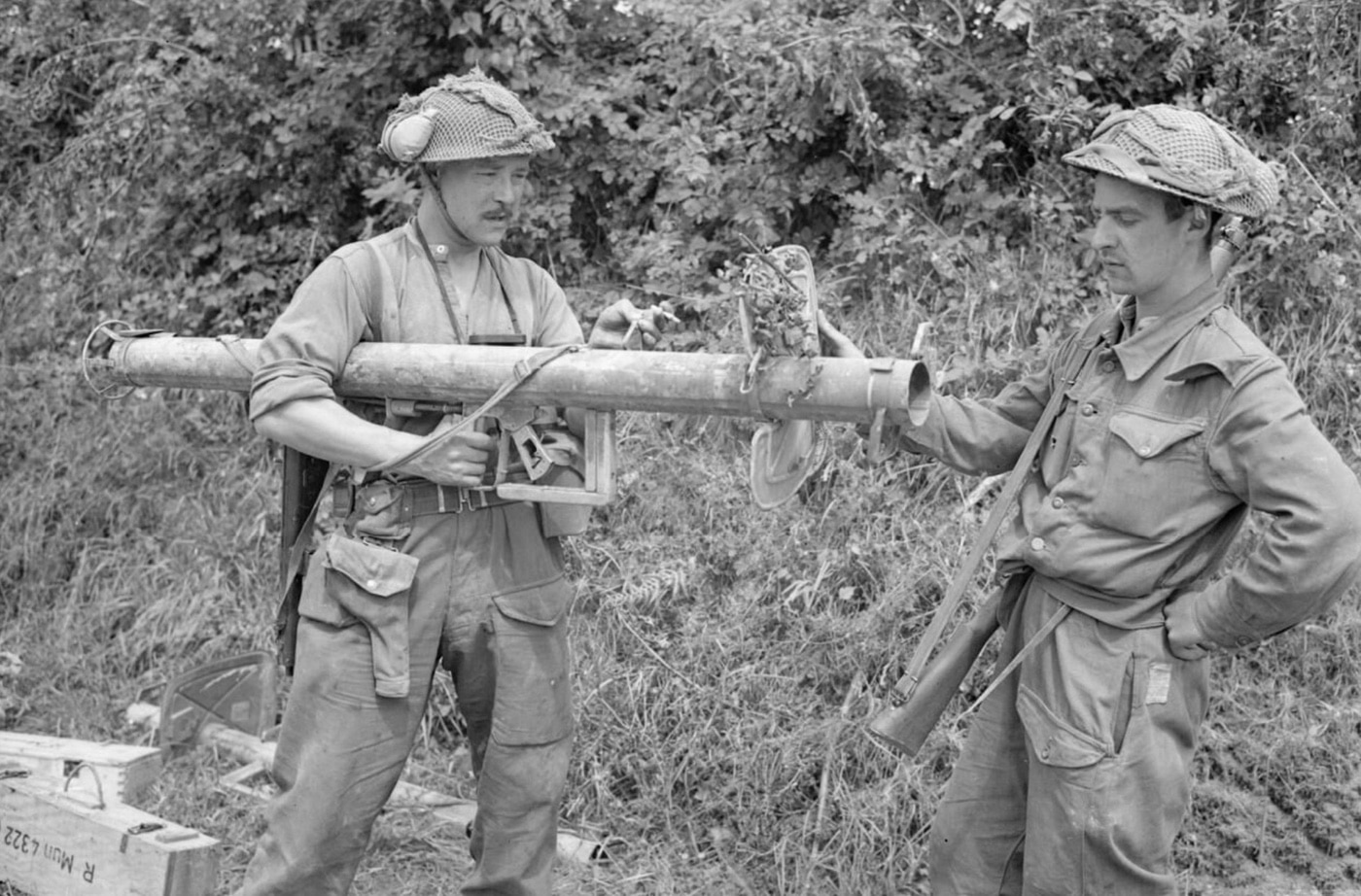
British soldiers examine a captured Panzerschreck in July 1944. The weapon was seized in the Pas-de-Calais region of France. Image: IWM
Also among the captured booty was the American 2.36 bazooka.
TheM9A1 bazookawas a man-portable anti-tank weapon that was the brainchild of the pioneering American rocket scientist Robert Goddard.
For its era, the 14-lb.
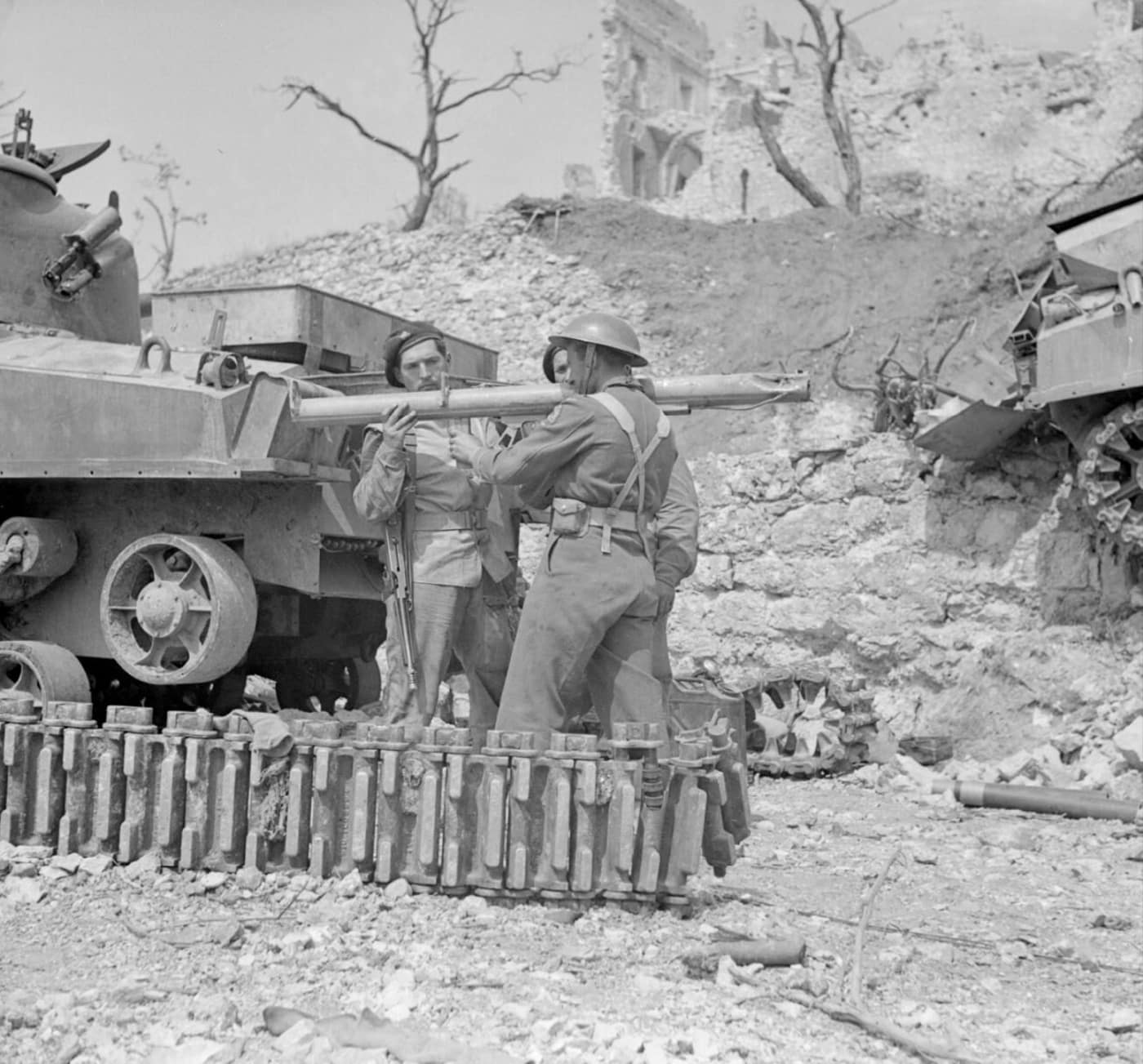
Polish troops with II Corps examine a captured German Panzerschreck in the Piedmont region of Italy. Image: IWM
rocket launcher was revolutionary.
The Panzerschreck
The GermanRaketenpanzerbuchse54 or Rocket Anti-armor Rifle Model 54 was abbreviated to RPzB 54.
German troops called it the Panzerschreck.
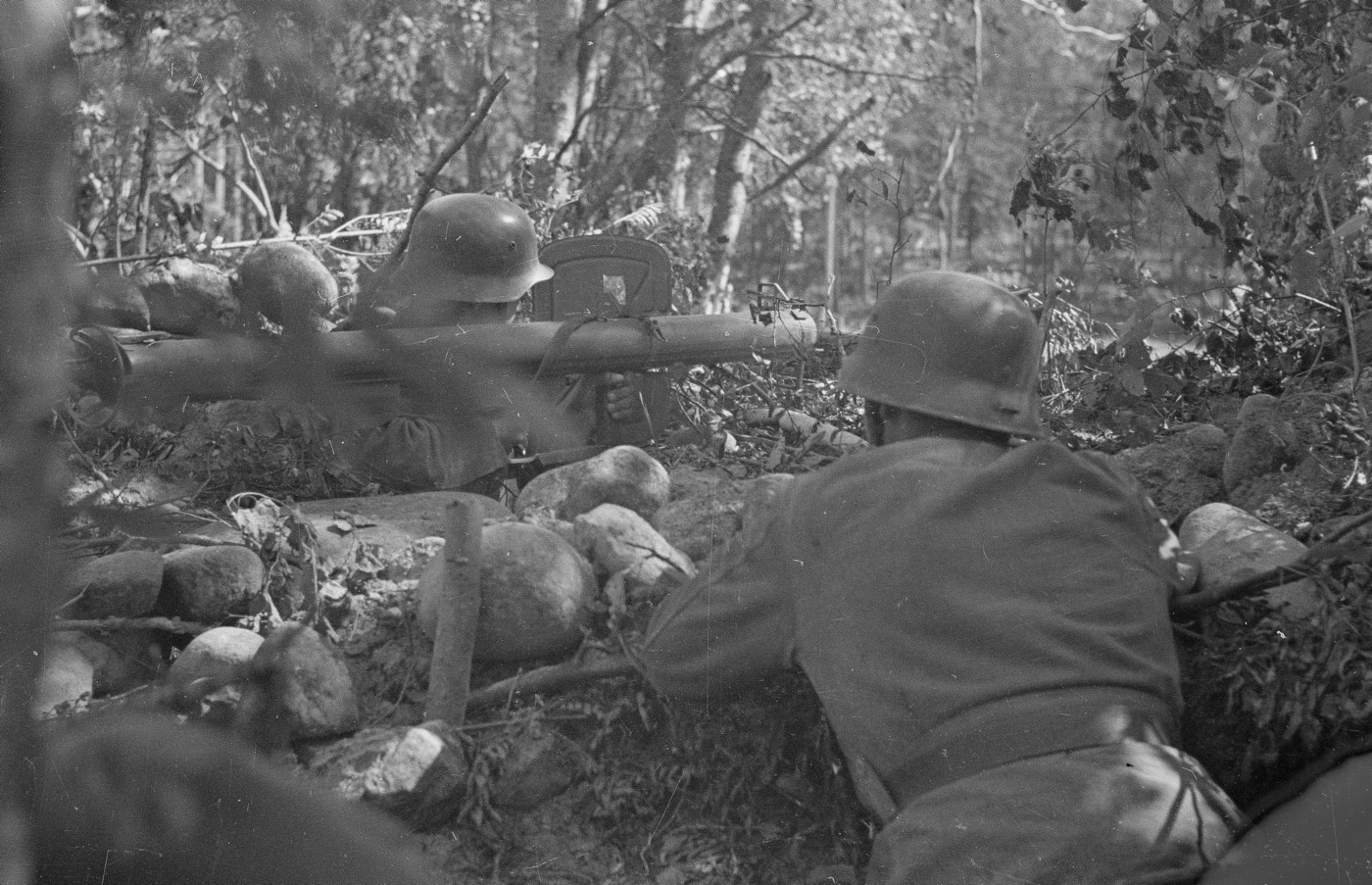
Finnish soldiers stalk Soviet tanks at the Vuosalmi bridgehead station on July 26, 1944.Image: SA-kuva
This literally translates to tank scream, tank fright, or tanks bane.
The 88m warhead used by the RPzB 54 was adapted from that of the 8.8 cm Raketenwerfer 43.
This was a trailerable crew-served anti-tank rocket launcher that saw service from 1943 until the wars end.
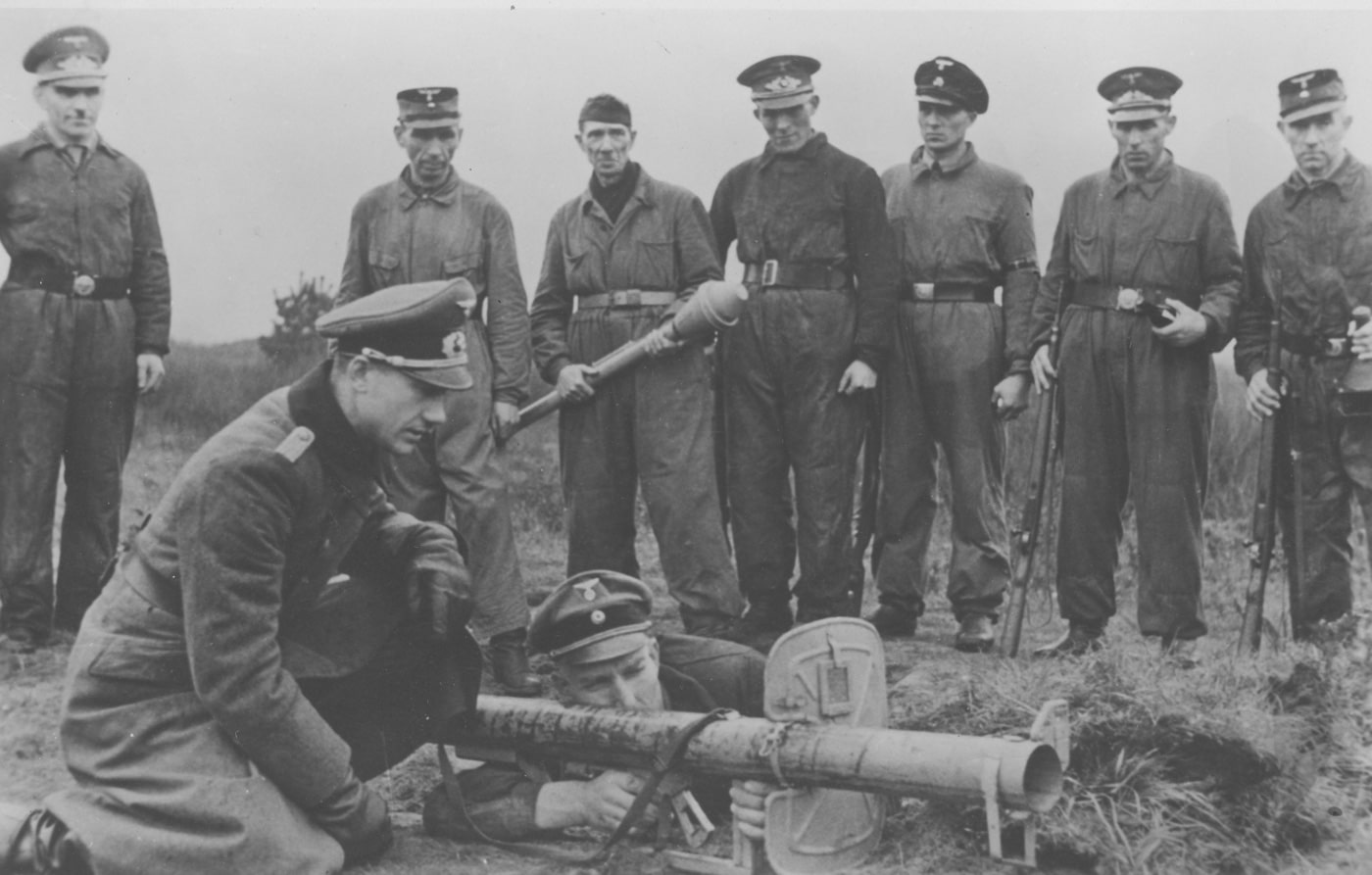
A German officer teaches aVolkssturm volunteerhow to use the Panzerschreck RPzB 54 anti-tank launcher in 1944. Image: Polish State Archives
This percussion-fired launcher was mounted on a two-wheeled gun carriage and was fairly cumbersome as a result.
By contrast, the RPzB 54 was designed to be easily man-portable.
Where the Raketenwerfer 43 was percussion fired, the Panzerschreck was fired electrically.
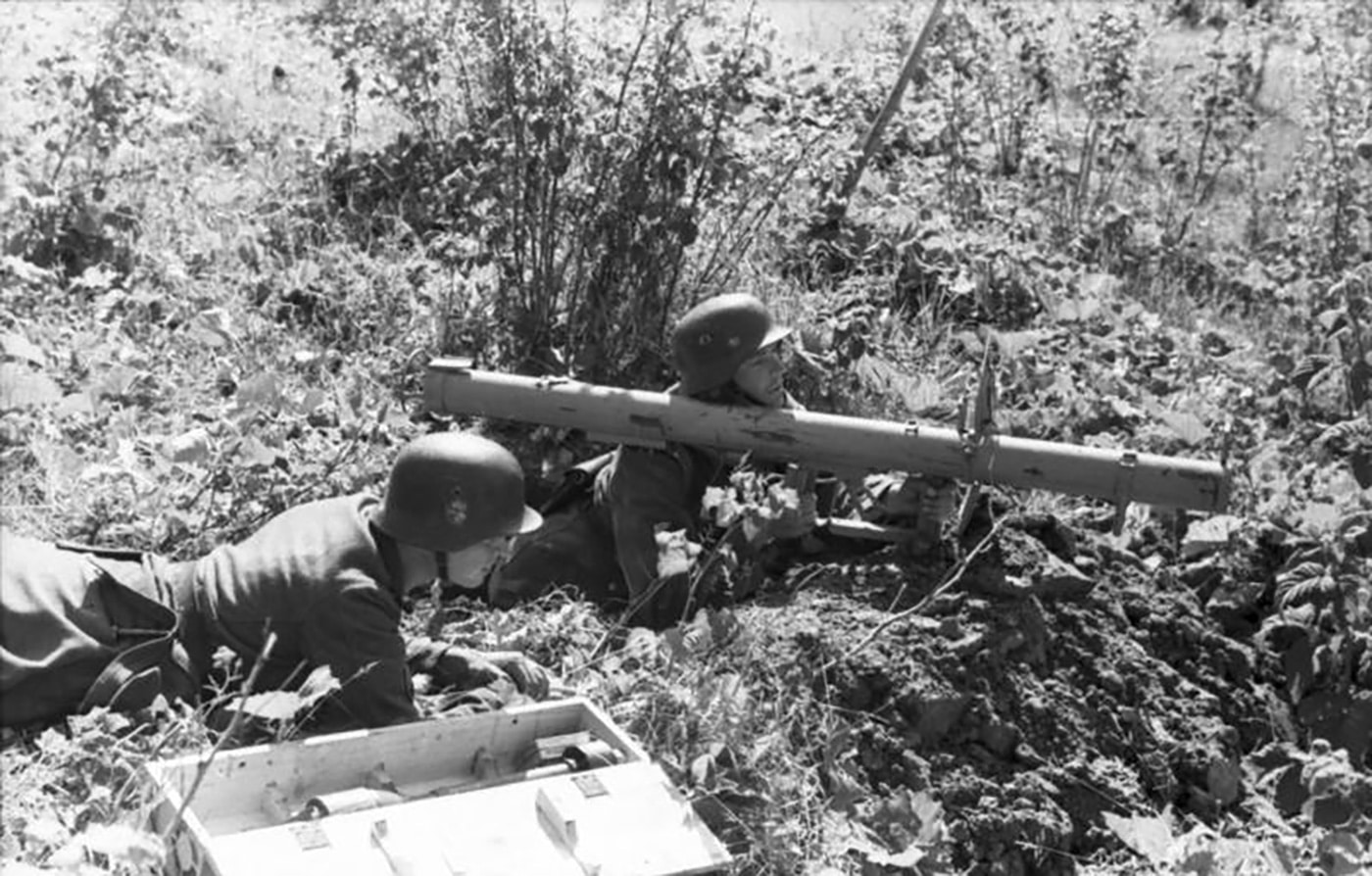
German soldiers with Panzerschreck anti-tank rocket prepare to ambush a Soviet tank during August 1944.Image: Bundesarchiv,CC-BY-SA 3.0
Early launchers carried the designation RPzB 43.
They were 5.5 feet long and weighed about 20 pounds empty.
The RPzB 54 differed from the bazooka in a couple of critical aspects.
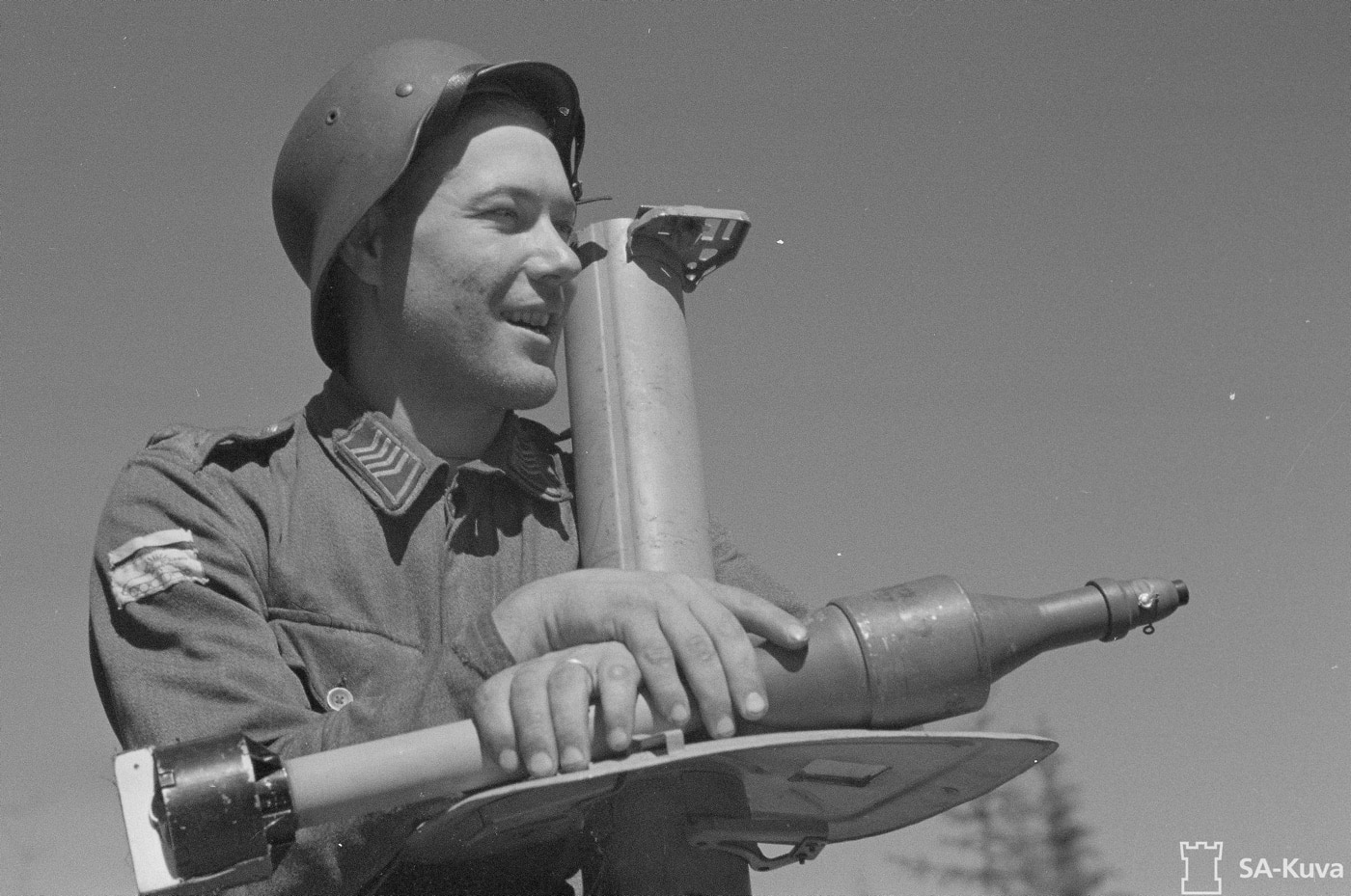
Sgt. Paul Renvall of the Finnish Defense Forces knocked out four Soviet heavy assault vehicles with the Panzerschreck at the Battle of Tali-Ihantala.Image: SA-kuva
By contrast, the rocket fired by the Panzerschreck continued burning for about two meters past the muzzle.
As you might imagine, this got a bit cumbersome in combat.
The original version without the guard was titled the RPzB 43.
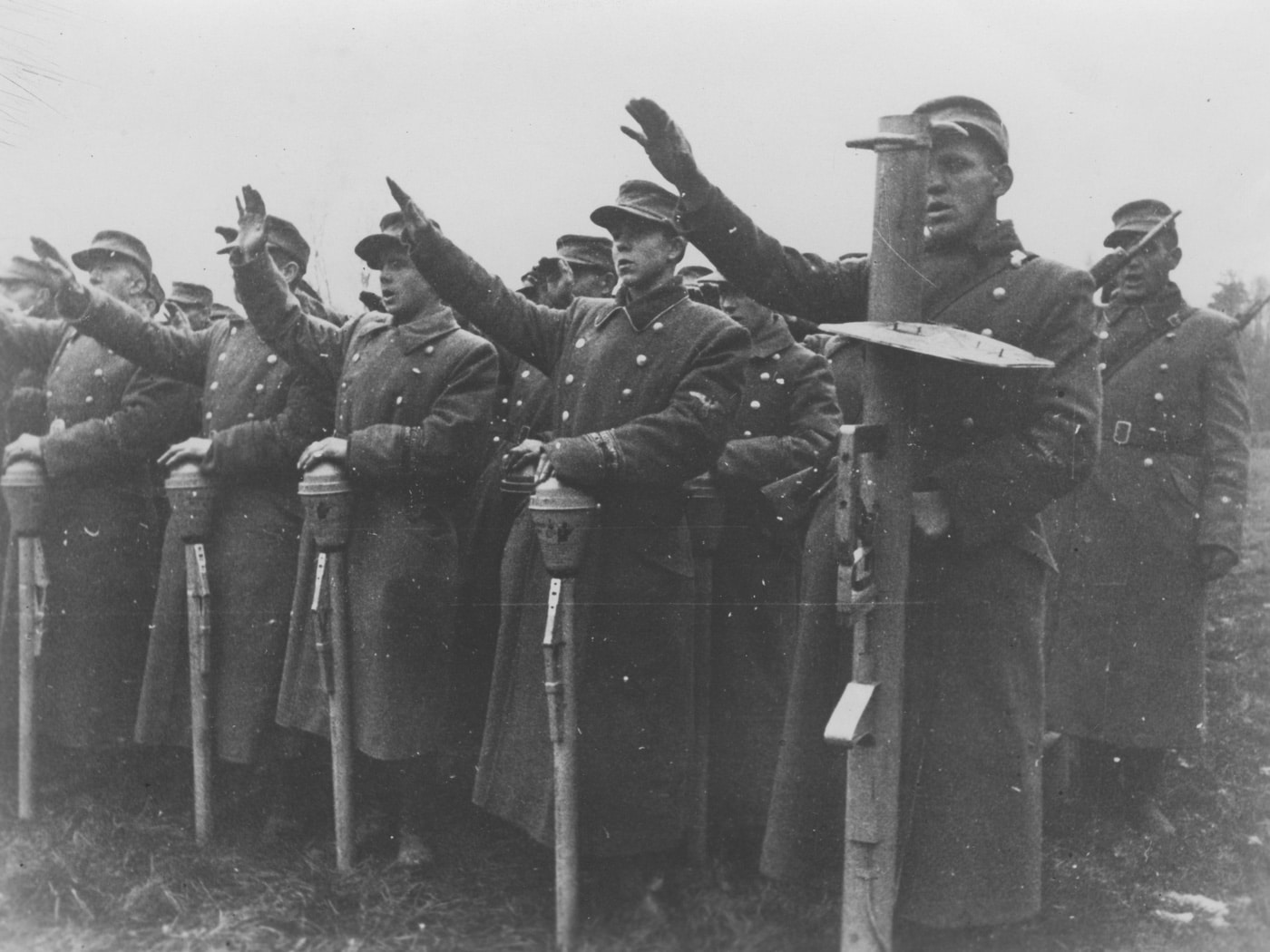
Volunteers of the Volkssturm armed with Panzerfaust 60m and Panzerschreck 88mm grenade launchers swear allegiance to Hitler in November 1944. Image: Polish State Archives
The variant with the shield was the definitive RPzB 54.
The blast shield was pressed out of thin gauge steel and provided little if any protection against incoming fire.
However, it did negate the need for all that cumbersome protective clothing.
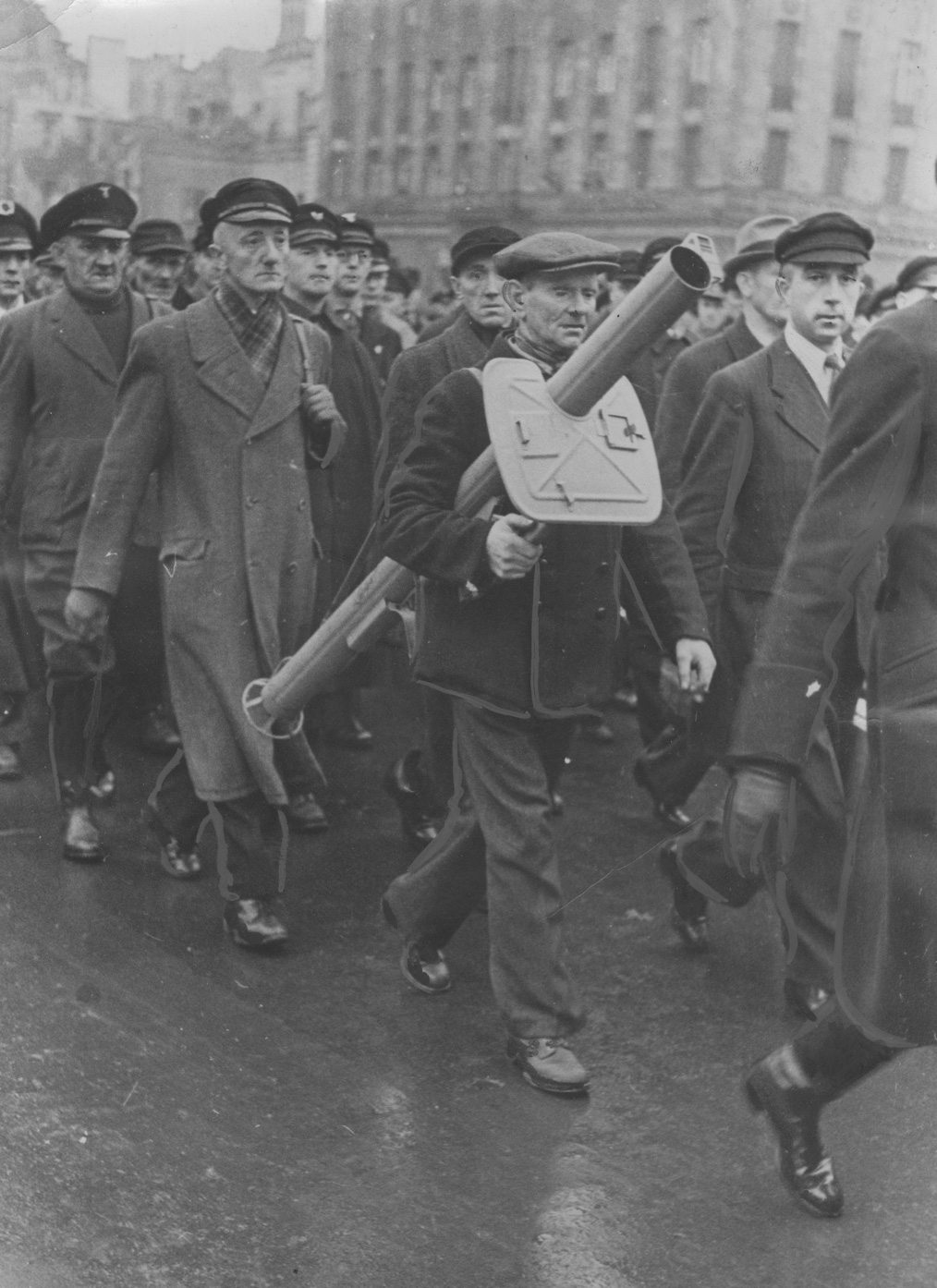
In November 1944, a Volkssturm unit marches through the streets of Berlin. One of the volunteers carries a Panzerschreck 88 mm RPzB 54. Image: Polish State Archives
The weight of the final version was about 24 lbs.
The Panzerschreck rocket traveled at around 110 meters per second.
The maximum effective range was 150-180 meters.
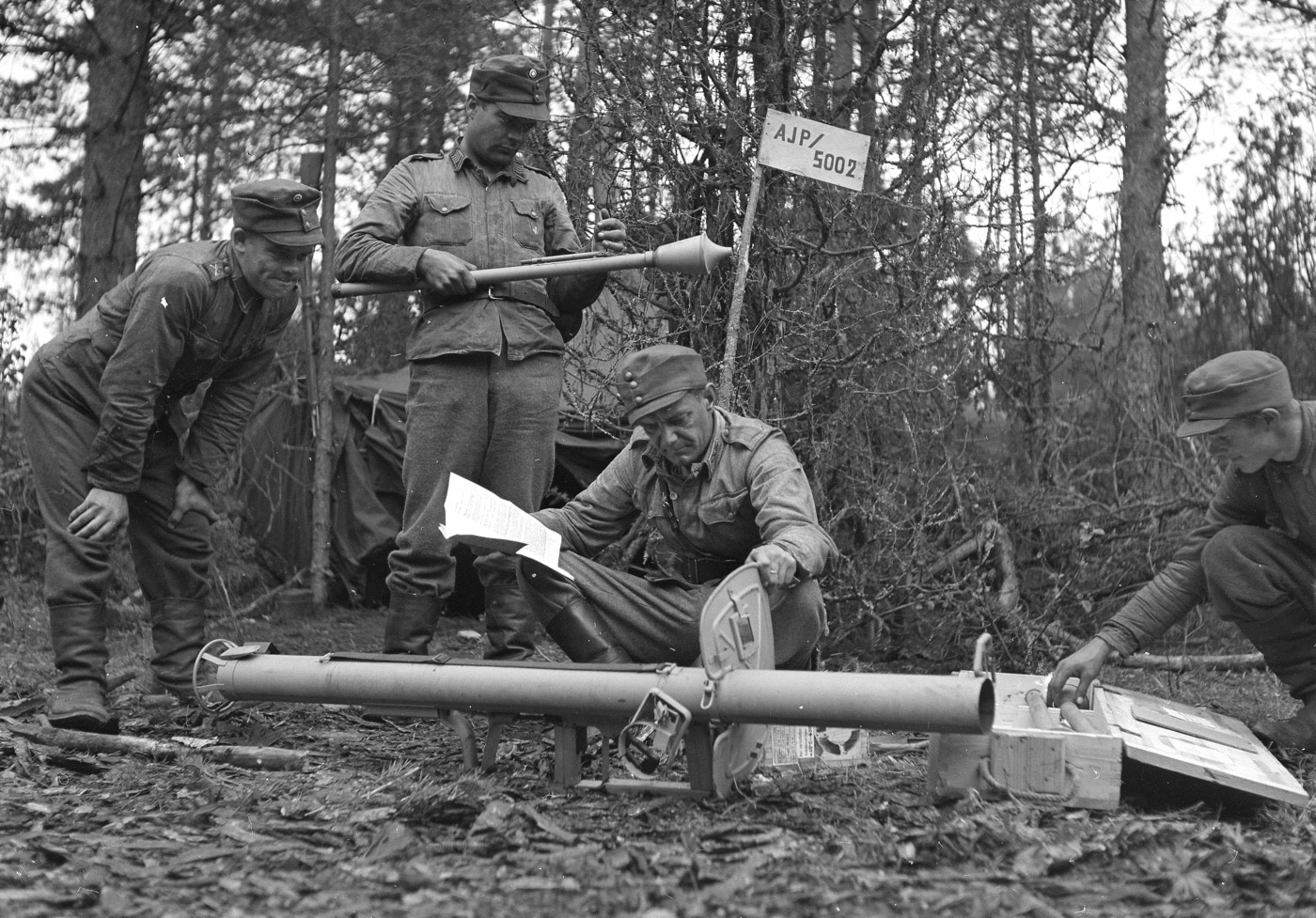
German anti-tank weapons were delivered to Finnish troops in Kivennava during the Continuation War against the Soviet Union. The weapon in front is the RPzB 54 Panzerschreck.Image: SA-kuva
Sights were simple pressed steel units affixed to the launching tube fore and aft.
Tactics
As the war progressed, the Wehrmacht found itself solely on the defensive.
Such dire circumstances drove remarkable innovation on the battlefield.
Anti-tank teams were typically arrayed in pairs separated no further than 115 meters apart.
These specialized assault troops could be found using the Panzerschreck, the Panzerfaust, or some combination.
Ideally, these teams would engage Allied tanks simultaneously at ranges of no more than 69 meters.
Gunners were trained to aim for the thinner side or rear armor whenever possible.
A shaped charge warhead like that of the Panzerschreck requires a certain predetermined standoff distance to be effective.
The warhead behaves like an explosive lens to focus the force of the blast onto a single concentrated point.
The Panzerschreck produced an immense volume of white smoke upon firing.
German troops referred to the weapon as the Ofenrohr or stovepipe as a result.
Ruminations
When compared to modern weapons, the Panzerschreck was unduly heavy, cumbersome, and inaccurate.
However, by the standards of the day it was revolutionary.




